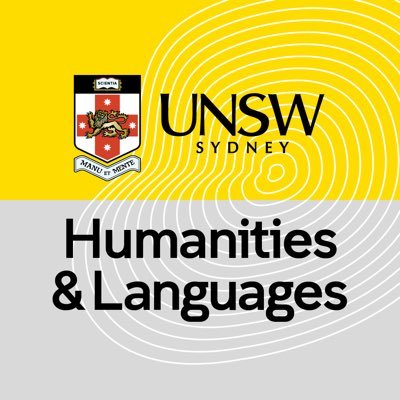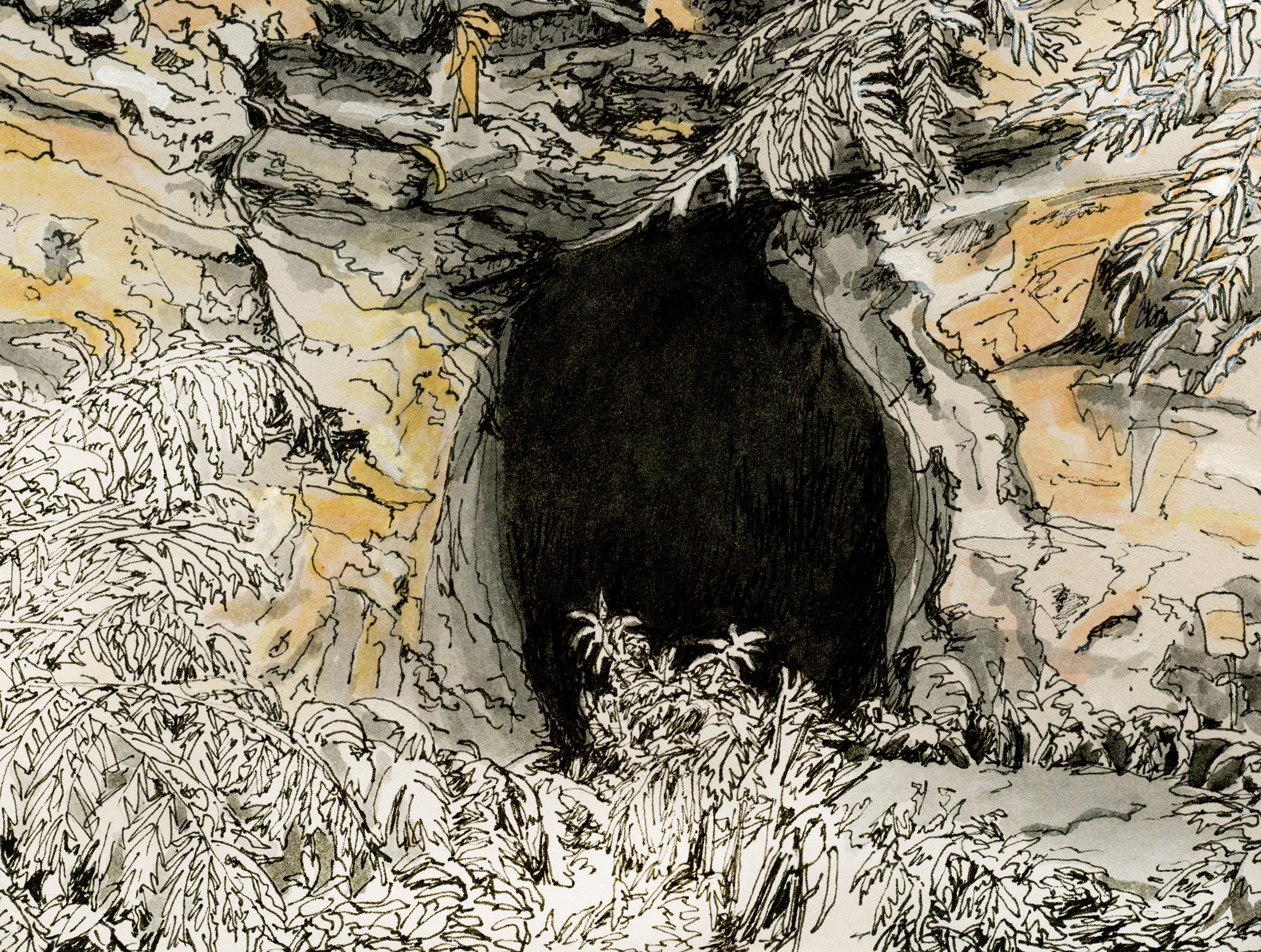
Welcome
Subterranean Geographies in Australia Symposium
An online event
February 2022
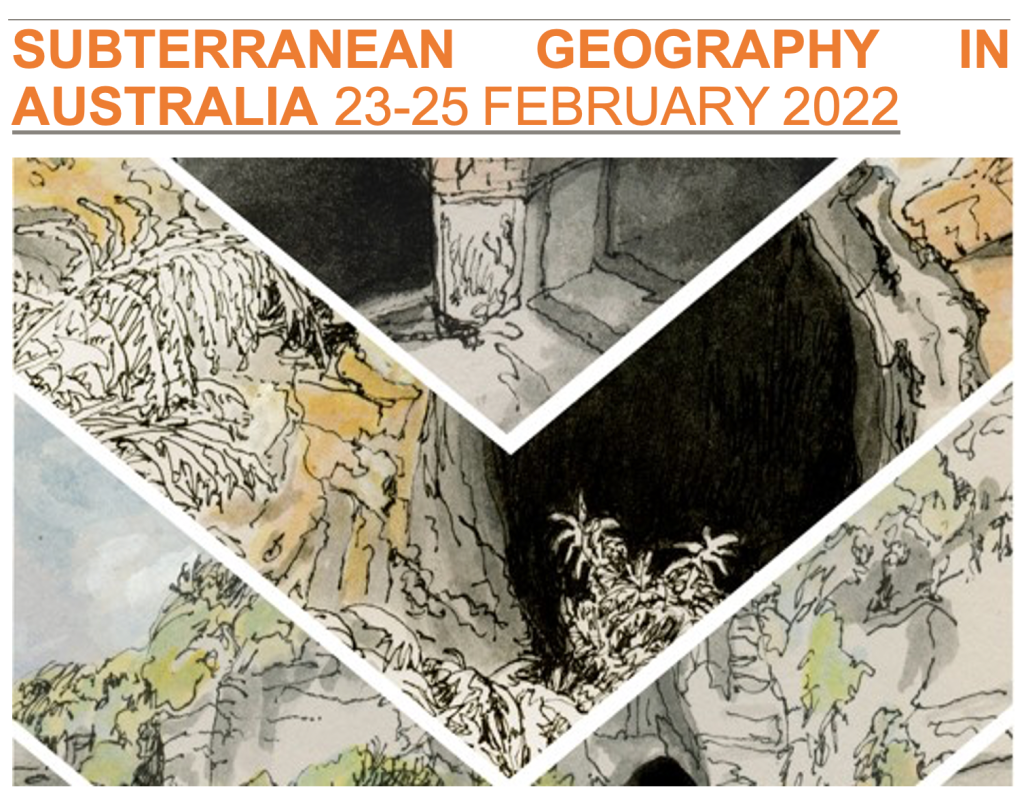
(closes 21st February 2022)
The links to each of the sessions will be provided online and through your Eventbrite ticket.
We would like to respectfully acknowledge the Gadigal (Cadigal) peoples of the Eora Nation, who are the traditional custodians of the waters, lands and skies where we present this event from. We also pay respects to the many traditional custodians of the various lands and waters upon which we travel from and acknowledge the strength and wisdom of Elders now and in the past. We want to firmly acknowledge that Aboriginal sovereignty has never been ceded.
Welcome to the Subterranean Geography in Australia Symposium. This event brings together “underground” and“underwater” geography scholars in Australia in order to discuss and identify key Australian-related themes for the“subterranean turn” – a “down-under subterranean turn” if you will – and to map future avenues so that this scholarship is more directly contributing to international debates on underground geographies. The Symposium will be structured online, over three days.
The Geographical Society of NSW and the School of Humanities and Languages’ Environment and Society Group at UNSW are delighted to present papers that reflect on critical and creative approaches to Australian subterraneanGeography.
Keynote Lecture
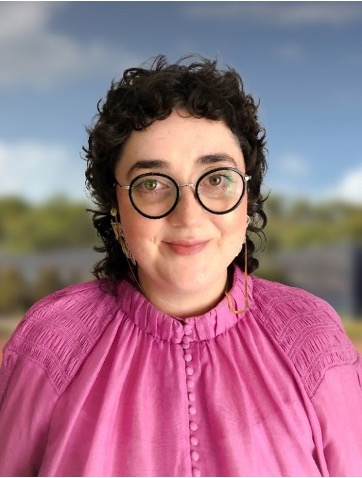
Dr Amelia Hine, The University of Wollongong “Ground Theory”
14:30 Wednesday 23 February 2022
This talk comes out of several years developing a research specialisation in more-than-human assemblages within the extractives industries. During this time I have repeatedly asked myself two key questions, namely: 1) how valid or authentic is it to do subterranean nonhuman research that relies on interviews with humans for data collection, and 2) where is the guide to more-than-human methodologies for the underground that I really need!?
While a number of more-than-human methods papers and books exist, these generally do not have a focus on the specific nonhumans of the underground, including the ground itself, and their particular challenges including invisibility, denseness, and nonlivingness.
As with many others working in niche more-than-human subfields, it is up to the current scholars in the field to create the guide we wish existed when we first began our research. To that end I will use this keynote to bring together my own methodological forays that have focused on both interviewing and creative practices with alternative methods gleaned from other work in more-than-human subterranean research as a starting point for just such a guide. The aim of this work is not to be prescriptive, however, but to touch the surface of just how many methodological avenues there are, in what ways they are engaging the underground as a nonhuman assemblage, how they might differ from more common nonhuman research topics such as animal studies, and how we can think about using and developing these methods in creative and interesting ways to further advance our collective work.
About Dr Hine:
Amelia Hine is an academic, designer, & emerging artist. Her practice focuses on complex networks and more-than-human relationships that are shaped by and influence mine closure and landscape planning.
Discussant Response

The Symposium is proud to welcome Dr Andrea Marston to respond to Dr Hine’s keynote
Dr Marston is a geographer interested in the material politics of resource extraction. Working at the intersection of political economy, science and technology studies, and the cultural politics of nature, they explore the relationship between the grounded practices of resource extraction and the reproduction of racialized, colonial, and gendered national politics.
They have been an Assistant Professor in the Department of Geography at Rutgers University since Fall 2019. Prior to that, they completed my PhD in Geography at UC Berkeley.
Please do not hesitate to contact us if you have any questions: taylor.coyne@unsw.edu.au; marilu.melo@unsw.edu.au
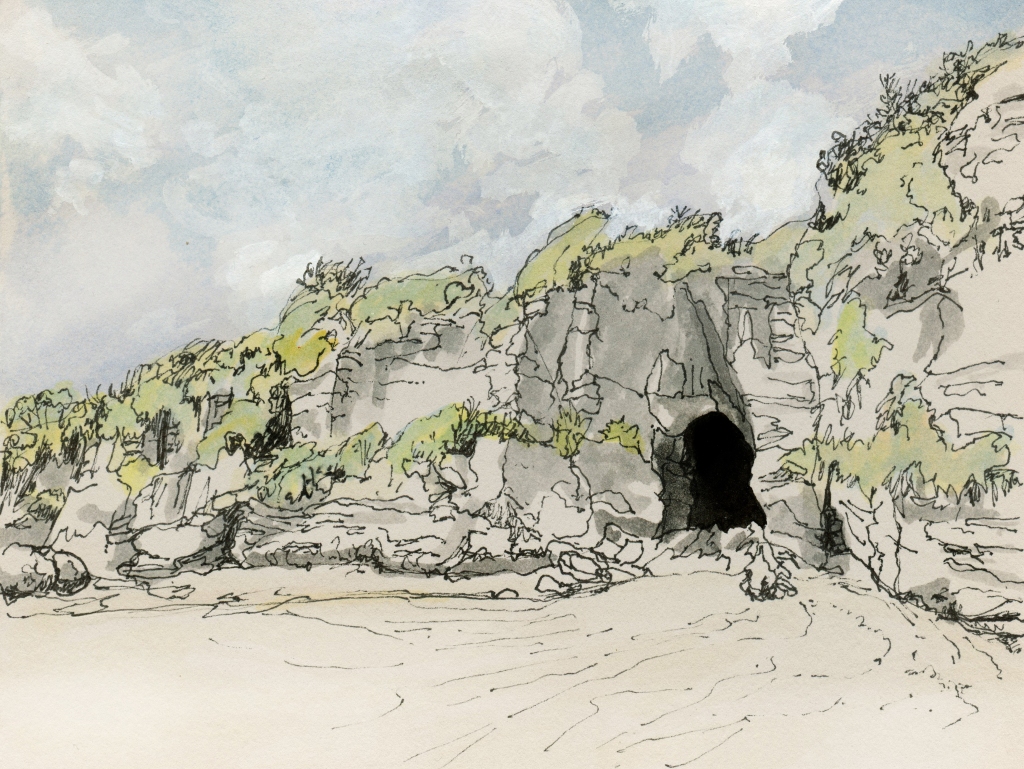
Symposium Program
Day 1 | Wednesday 23 Feb.
14:30-15:00 Acknowledgement of Country, Welcome, Housekeeping
15:00-17:00 Keynote lecture
Day 2 | Thursday 24 Feb.
9:00 – 9:10 Welcome; Housekeeping
9:20 – 11:00 | Session 1 Undergrounds and Infrastructure
9:20 – 9:40 Pratichi Chatterjee, University of Sydney; Marilu Melo Zurita, University of New South Wales; Amelia Hine, University of Wollongong | Knowledge and Materiality of Undergrounds
In this article we examine how lay and expert knowledge of the underground is developed and shaped by political-economic imperatives, legal frameworks of property and the material character of land. Drawing on interviews with tunnelling professionals and with residents impacted by an underground road project in Sydney, Australia we identify different ways of knowing the underground. First as a resource whose use is shaped by political and financial exigencies. Second through data generated from technical surveys, by which the underground is enrolled into processes of risk assessment. Third as a space of ownership, control over which is determined by legal property relations that distribute rights between residents and the state. And finally, through the experiences of disruption caused by exploration and the emptying out of subsurface land, which in some cases has created visible damage for surface-level properties and produced noisy living environments. We conclude with a discussion of what constitutes knowing in these different examples and their political and ethical implications for the future of the underground.
9:40 – 10:00 Kurt Iveson ,The University of Sydney; Marilu Melo, The University of New South Wales | The Urban Politicsof “undergrounding” telecommunications cables in Sydney
In April 1897, the footpath near the corner of Pitt and Park Streets in Sydney began to subside. The subsidence occurred directly above a newly constructed tunnel built by the Postmaster General to “underground” telephone cables. By the middle of the year, representatives of the City of Sydney (responsible for footpaths) and the Postmaster General (responsible for the tunnel) who gathered at the site had to be separated by police, to prevent an escalation of violence. Conflict about the authority of the Postmaster to tunnel beneath the footpath became the subject of a Parliamentary Committee and considerable public attention. The “undergrounding” of telephone cables was supposed to be a solution to the problem of overhead telephone wires multiplying on footpath poles. But it caused a new set of problems. As the network grew exponentially over the 20th century, the undergrounding of telephone infrastructure continued to be a source of conflict between urban and telecommunicationsauthorities. In this presentation, we tell the story of the ‘undergrounding’ of telephone infrastructure in the century between the 1897 tunnel controversy and the 1997 Telecommunications Act, which granted telecommunications operators a set of planning immunities for the installation of underground infrastructure. The desire of urban and telecommunications authorities to situate telephone cables underground has been the cause of on-going conflict over how the labour of undergrounding is organised and regulated, and how the impact of undergrounding on the surface is managed and compensated.
10:00 – 10:20 Phil McManus, The University of Sydney; Graham Haughton, Manchester University | Going Underground: Infrastructure, Urban Planning and Contestation in large Australian Cities
The largest Australian cities are increasingly going underground to manage potential clashes betweeninfrastructure and surface-level land uses. In this presentation we argue that while a subterranean geography of Australian cities has existed for many decades, the underground is increasingly where the movement of people, of services and communications occurs, with the occasional surface-level referent to identify topographical relationships. The underground is perceived as the new “greenfield” site or “clean slate” that underpins many planning visions. As development moves underground, project proponents have sought new ways of rendering visible to the public – or indeed invisible – aspects of their proposals and objections, whilst protestors have had to find ways of revealing the source of their concerns. This has been particularly evident in the case of motorway tunnels in Sydney, as developers present the benefits of tunnel building through various simulations, whilst objectors have sought to enroll the persuasive power of art, protest posters and annotated maps to highlight their concerns, particularly around pollution and health impacts.
10:20 – 10:40 Gretta Logue, Sydney Trains | Bradfield’s orphaned rail tunnels, challenges in conservation and activation.
Inaccessible historic underground places are fascinating because imagination, scarcity and secrecy are involved. Attempts to gain access and experience these places persists in most cities. Discovering is exciting. When they are made public, they often end up on the tourist ‘bucket list’ but also something intangible and special is lost. The St James disused railway tunnels under Hyde Park are one of these special places.
Modelled on the London Underground, Bradfield’s first phase of the City Circle delivered St James and Museum underground railway stations. They were built via the cut and cover construction method and, when they opened in 1926, finally connected the city with Central Station at the southern edge of Sydney.
Building additional tunnels at St James was part of Bradfield’s plan so when he returned after the Sydney Harbour Bridge was finished, he could continue his underground without too much operational disruption. However, Bradfield retired in 1933, the depression hit and changed transport priorities and war with Nazi Germany was starting in Europe. Bradfield’s additional tunnels would never be used as intended.
The 1940s war time adaptions of the tunnels into public air raid shelters and a military control centre is their most significant alternative uses and a fascinating aspect of their significance. Reinforced concrete blast walls at regularintervals, military graffiti, and air raid shelter posters all still exist down there.
Today the pressure is on public assets to be economical – ‘use it or lose it’ attitudes prevail in government, but usually this is commercial rather than cultural or community. What does this mean for the disused tunnels at St James? In this talk Gretta provides an overview of the tunnel’s history, the conservation issues, and the challenges of activating these highly significant heritage assets.
10:40 – 11:20 Break
11:20 – 12:20 | Session 2 Undergrounds and History
11:20 – 11:40 Virginia Mannering, The University of Melbourne | Up and Over and Inside Out: Histories ofUnderground Construction and Spoil Reuse in Melbourne
Around twenty years after colonisation of the area now known as Melbourne, Australia, the settlement’s first major urban earthmoving activities commenced. These early excavations focused on topographic modifications relating to the construction of infrastructure such as river dredging and swamp ‘reclamation’. Though such projects were vast, they sat on the city’s surface, seemingly diffuse in form and failing to capture public imagination.
At the end of the Second World War, however, this changed. While the suburbs bloomed on the city fringes, a post-war building boom fed the construction of new towers and infrastructures (particularly rail) in the city’s centre. As a consequence, new types of incisions appeared in the urban landscape. Unlike the earlier digs, which were shallow ‘scrapes’ across landforms, CBD excavations were deep and explored new territories of the subsurface and underground. Newspaper articles from the time document a city intrigued by novel plans of the city below andthe technological advancements allowed machines to dig farther and faster than ever before. Importantly, such projects generated hundreds of truckloads of spoil and rubble, dislocated from the relative stability of the underground; their naturally occurring strata reorganised. This material was reconstituted and reused, again re-shaping the city’s surface by creating new landforms; often in the form of infrastructures such as highways. Though not highly visible and existing as ‘waste’ material, the debris of the underground provided the space and material for the ‘flow of capital’ (Hutton, 2019) the modern city required.
Building on recent works which explore the contemporary condition of the underground, and increasing concern over the impacts of earthmoving activity, this paper examines a period of growing consciousness around – and subsequent early projects of – the urban underground in post-war Melbourne (1946-1975) and the early stages of the ‘hollowing out’ and redistribution of the city’s subsurface. Archival materials and critical cartography are employed to explore a key moment of modern city-building in Australia and the upheaval and remaking of underground ‘spoil’ as a key, though largely concealed material in the construction of the city.
11:40 – 12:00 Jarrod Hore, The University of New South Wales | The Providential Underground: Volume, Energy, andthe Legacies of Colonial Geology
Geoscientists have come to refer to the oil, gas, and coal reserves of Australia as the ‘gifts of Gondwana.’ In their reckoning these underground resources are the material base of a fossil-fuel centric economic history that stretches back over two hundred years. I aim to interrogate this popular geohistory by drawing upon new research in environmental history and combining it with work in geography that has taken a ‘subterranean turn.’ Taking these cues, this paper situates the Australian mythologisation of fossil fuels within a longer tradition of colonial thinking about the underground. Perhaps in contrast to geographers, colonial and environmental historians have long insisted that Australian interest in the extraction of coal lagged the industrialised north: colonial Australia was an organic world, they argue, and the scale of fossil extraction was negligible until well into the twentieth century. It is true that economically and materially, the gifts of Gondwana were bestowed closer to the time that the supercontinent was accepted as a fact of geological history from the 1960s. Rhetorically, however, they connect to a longer history of providential thinking about the underground that framed southern resources as the inheritance of white settlers from the 1840s. Exploring this colonial history establishes a new chronology for voluminous thinking ‘down under,’ providing a foundation for more precise reflection on the relationships between colonialism, territorialisation, energy, materials, and underground spaces.
12:00 – 12:20 Paul Munro, The University of New South Wales | Sydney Un-earthed: An Historical Political Ecology of Brick-pits
During the mid-19th century, rich deposits of Wianamatta shale were identified by geologists under Sydney’s inner-west suburbs (in particular the suburbs of St Peters, Alexandra, Newtown, Erskineville and Marrickville). Being the ‘the brickmakers’ equivalent of gold’, unsurprisingly Sydney’s brickmaking industry boomed through the region soon after (between the 1860s and 1930s), leaving in its wake a patchwork of deeply excavated brick-pits. Subsequently, the meteorological interacted with the geological, and a ubiquitous feature of Sydney’s inner-west emerged in the form of (abandoned) “brick-pit waterholes.” These were then used (often illicitly) by the local populace for a range of activities including boating, fishing, swimming and the dumping of rubbish. At the same time, they were increasingly viewed governments as amenacing feature of the landscape – with the tragedy of “drowning in brick- pits” becoming a semi-regular occurrence in the locale. In this paper, I developed a historical political ecology analysis of these brick-pits, to “un-earth” insights into their role in shaping past and present inner-west Sydney. I divide my analysis across three key temporal themes. First, I explore the political economy of Sydney’s brickmaking industry, and its role in the creation of these brick-pit waterholes. Second, I consider how these brick-pit waterholes became entangled with the social lives of inner-west residents during the first few decades on the 20th century. And finally, I examine how policies to “eliminate” these holes in the ground ultimately helped to recraft the urban form of Sydney’s inner-west, including the creation of parklands and sports ovals.
12:20 – 12:40 Ruth Morgan, Australian National University | Hydropolitics for a New Nation: Hydrological originsand limits for the Australian Interior
In a paper communicated on his behalf to the Royal Society of New South Wales in July 1917, South African geologist Alexander du Toit presented a lengthy analysis of Australia’s Great Artesian Basin. Having visited the continent on the eve of the Great War for a meeting of the British Association for the Advancement of Science, hehad been intrigued by vast underground system; ‘probably no other geological problem is so many-sided …bristling as it does with puzzles of all kinds’, he marvelled. In sharing this paper, du Toit was intervening in a debateas to the origins and limits of the basin’s waters that dated to the turn of the century. One side held that the subterranean waters were recharged only by rainfall; its chief protagonist, New South Wales Government Geologist Edward Fisher Pittman, refuted du Toit in what would be his last published comments on the matter. Pittman’s antagonist, John Walter Gregory, Chair of Geology at the University of Glasgow, continued to promulgate until his death in 1932 his position that the basin’s waters were entirely finite – long after the young nation’s geologists, led by Pittman, had reached a consensus that the subterranean waters of the continent’s arid interior were replenishable. That the continent’s arid interior might pose environmental limits to the population andprogress of the settler nation preoccupied Australians throughout the first half of the twentieth century. Deemed more climatically amenable to whites than the tropical north, the centre nevertheless was hydrologically ill-suited to even the pastoral economy. Or so the likes of Griffith Taylor argued. Others, meanwhile, dismissed such gloomy assessments of the interior’s carrying capacity. Focusing on the interwar expressions of these views, historians have understood them as part of wider international conversations about global population and racial degenerationthat were infused with environmentally determinist thought. This paper’s consideration of the prevailing hydrogeological concerns at the turn of the twentieth century to the end of the Great War contributes a prelude to these interwar debates, in which Australian anxieties about the settler nation’s progress intersected with geological concerns as to the history and structure of the Earth. Here, in the wake of the nation’s Federation in 1901 and prolonged drought, biopolitics encountered hydropolitics, in which the continent’s uncertain subterranean hydrological endowment became the subject of intense scrutiny.
12:40 – 13:00 Taylor Coyne, The University of New South Wales | Queer Ecologies of Sydney’s Subterranean Waterscapes
The urban area across the Sydney Peninsula is built on the unceded lands and waters of the Eora Nation, the Dharug Nation, and the Dharawal Nation. It is also, mostly, built on top of a large underground aquifer – the Botany Sands aquifer. In conjunction with an undulating topography that guides waters off high ridge lines and into soggy depressions, this groundwater body hints at a wider ‘undergroundwaterscape’ across the region. In highlighting and affirming the subterranean qualities of groundwater as well as the vibrancy and nourishment of the underground, I suggest that the bodies of water that are set ‘on the boundaries’ of the surface/sub-surface interface can be beneficially analysed using queer theory. In queering groundwater, this paper seeks to further claims made by Astrida Neimanis (2017) regarding waters’ feminist phenomenological undercurrents and extend the call to see the bodies of waters and bodies of more-than-waters that inhabit the subterranean as queer. Situating these queer bodies within a dynamic ecology furthers this claim and exerts a need to map relations and the politics of such relations against a turbulent history. In this paper I conclude that not only are Sydney’s subterranean waterscapes queer, but the uncomfortable relations that have emerged from colonial hesitancy to ‘understand’ Sydney’s hydrological settings – including the biological systems that depend on them – can be understood as queer. In doing so, I hope that approaches to how Sydney’s undergrounds and Sydney’s waters are governed can be done so that justice and nourishment might be achieved.
13:00 – 14:00 Lunch
14:00 – 16:00 | Virtual Field-Visit Waterloo Pumping Station
Hosted by Phil Bennett Lead Heritage Adviser Sydney Water
To ground the symposium with a situated understanding of how Australian cities depend on the subterranean, the organisers proudly welcome Phil Bennett from Sydney Water to guide us through one of Sydney’s oldest and most significant pieces of water infrastructure – the Waterloo Pumping Station. This event will be run virtuallywith details to be confirmed.
Day 3 | Friday 25 Feb.
9:00 – 9:10 Welcome; Housekeeping
9:20 – 11:00 | Session 3 Undergrounds and Governance
9:20 – 9:40 Hannah Gould, The University of Melbourne | Stood to rest’: Vertical Burial and Reorientating 21st Century Necrogeographies
Human bodies are typically buried underground, horizontally ‘in repose’. To the extent that this orientation hasbecome the standard; it is a non-choice that is under-interrogated by scholars. In this paper, I discuss innovations which allow for the vertical orientation of the body within the earth and for the vertical stacking of remains below the earth in cavernous, multi-storey catacombs. Both of these boundary-pushing forms of disposition addressimminent shortages in the land allocated for cemeteries in the context of intense urbanisation and a peaking deathrate. They also promise to transform the necrogeography of contemporary cities and intimate relations between the living and the dead. Just as geographers have been called to question the “dominant horizontalism” that “privilege[s] the horizontal extension of cities to the neglect of their vertical or volumetric extension” (Hewitt &Graham 2015: 924), in this paper we argue that so too must death scholars reorientate their thinking on cemeteries to consider the vertical dimension and subterraneous space. This paper is a collaboration between the DeathTechResearch Team and the Managing Director of Upright Burials, where the dead are ‘stood to rest’ in shaft graves. The pragmatic advantages of vertical burial are easily explicated, but in this paper, we focus on the cultural and symbolic dimensions of this largely unfamiliar spatial relation and the challenges of ‘reorienting’ the public towardsthis new form of disposition.
9:40 – 10:00 Sam Holleran, The University of Melbourne | Bones Under Benches: Public Acknowledgment of Burials in Pioneer Memorial Parks
In Australian cities, historic cemeteries–once located at the urban fringe–are now dead centre. To accommodate growth, many have been relocated or pared down; making way for surface-level infrastructure and parkland. This presentation draws on an ongoing project examining Australian cemetery design and the tension between memorialisation, urban ecology, and recreation. It focuses on the attempts of community groups to digitally and physically document burials at Pioneer Memorial Parks: cemeteries turned into parks where headstones have been removed but human remains linger below ground. Conversion of ‘underutilised’ cemeteries managed by local councils started in the 1930s, receiving official approval in the 1970s, but opposition halted a number of headstone removal projects and the program was largely abandoned. This presentation will focus on six cemeteries-turned-parks in Melbourne and Sydney drawing on interviews with advocates for memorialisation. Utilizing anthropological texts related to burial and grave tenure, it will show the relationship between cemeteries and surrounding communities (particularly the ways grave tenure intersects with race, class, and indigeneity). Demands for acknowledgement of the below ground dead often come into conflict with the ‘prerogatives of the surface,’ for example: protecting property values, and shielding those easily upset by the idea of interments under recreational spaces. Lastly, the project analyzes how groups locate individual gravesites within parks; using historic maps and ground-penetrating radar, to make sure that excavations for playgrounds and public conveniences do not occur directly above burials. This illuminates the difference between ‘underground’ and ‘underfoot’, and how this distinction changes our relationship to the urban dead.
10:00 – 10:20 Ana Lara Heyns, Monash University | Caring for invisible rivers: Exploring water relationships in thecontemporary city
In Melbourne, as in many Australian cities, the watercourses that characterized the landscape in pre-colonial timeswere dislocated and drained underground, where their lack of superficial visibility has subdued their agency in the human experience of the contemporary city. The work done by McLean et al (2018), brings into discussion the concept of “shadow waters” which highlights the privilege of certain water values to be exalted while rendering other values invisible. This demotion of certain waters can be literal, like groundwaters, or drained rivers, or metaphorical, such as Indigenous water knowledges that have been repressed. The invisibility of underground waterflows, even those drained, makes them more complicated to relate to, therefore, have been easier to be shadowed in water planning compared to more visible surface water. With a case study in South-eastern Melbourne, this paper explores traditional devices (Martin, 2008), rituals, and Indigenous Ways of Knowing to activate relationality to Country for non-Indigenous researchers and speculates on rendering visible drained rivers that have been neglected in planning processes and physically disconnected from surface water in water management practices. The research is an ongoing project in Boon Wurrung Country and in collaboration with Elder and Dr N’arweet Carolyn Briggs AM. The aim is to integrate Indigenous worldview (Martin, 2017) into frameworks which have the potential to contribute to more sustainable management of urban waterways, as well as reactivating hybrid forms of care for non-indigenous Australians and other ethnic backgrounds in Melbourne.
10:20 – 10:40 Alexandra Crosby, Ilaria Vanni, Elise van den Hoven, James Goodman, Sebastian Groundstoem, The University Technology Sydney | Green Square Water Stories
This paper focuses on the initial findings from a case study of Green Square, one of the most ambitious urban renewal projects ever undertaken in Australia. Green Square is built on Aboriginal country in Sydney, over the top of a rich wetland system that connects Centennial Park, Botany Bay, Blackwattle Creek, and the Cooks River. In the first part of the paper, we outline how Green Square came to be. These historical accounts demonstrate how the narrative of urban renewal hides socio-environmental trajectories and relations connected to water, by literally pushing them under the concrete and glass construction of place. The privileging of the urban renewal narrative causes the loss of social and environmental memories of place, and with them connections between people and their environment that can inspire stewardship and care initiatives, including water sustainability. While developments at Green Square include many sustainable water initiatives (for instance new water recycling plant in the old South Sydney Hospital site in Joynton Avenue and a new 2km stormwater drain from Zetland to Shea’s Creek channel, Alexandria) very few are designed to be visible or legible. The second part of the paper presents the first stages of an interaction design dealing with this issue by engaging people with the water stories of what is now called Green Square. Through this creative work, we ask how visualisation of socio-environmental trajectories can re-create connections between people and water, and to mobilise the connections towards a more sustainable water future.
10:40 – 11:00 Break
11:00 – 13:00 | Session 4 Undergrounds and Creative Interpretations
11:00 – 11:20 Perdita Phillips, Independent Artist | Invisible Monsters: a porous meditation on groundwater
In 2018 I created a tour for SymbioticA and Somatechnics’ Quite Frankly: It’s a Monster Conference in Perth, Western Australia. Invisible Monsters: A Guide to Perth’s Underground Pollution was a half day excursion following the subterranean from the former gasworks site at East Perth on the banks of the Swan River to the traces of the one-time Golden Fleece petroleum depot at Port Beach, Fremantle. Following stories of groundwater pollution, the performative outing combined historical anecdotes about tips, drains, point and diffuse source pollution issues, with exercises in embodied sensitisation and human decentring. The performance event posed the questions: what happens when pollution moves below our feet in ways that seems to suggest that remediation is at best an over-optimistic hope? What strategies can one use to live with contaminated soils when the shadow of the monster is one that suggests a ‘toxic connectedness’? Four years later I am reworking the guidebook produced for the event, in a re-examination of connectedness, remediation, care and porous repair. The additions and annotations aim to present an extended plane of aesthetic and conceptual transmissions and movements. I will present some pages from the enriched, visual text that has been created.
“We unforget, actively, constantly and resistantly, because forgetting is shaped by forces bigger than ourselves” (Shotwell, 2016, 38)
11:20-11:40 Claire Taylor, independent curator | Thresholds: recent collaborative work by Julia Davis and Lisa Jones.
This presentation will introduce recent collaborative work by Sydney-based artists Julia Davis and Lisa Jones from their exhibition Thresholds at Tin Sheds Gallery (University of Sydney School of Architecture, Design and Planning) last year. This exhibition invited visitors to reimagine layers of the built environment under Sydney’s city centre and contemplate the passing of time in both human and geological time-scales.
The exhibition, curated by Claire Taylor, explored ideas of transience and place through a series of large-scale drawings, photographs, and a multi-channel video installation. The immersive installation draws viewers into an enveloping darkness from which details of tunnels and chambers beneath the city are glimpsed in torchlight. The imagery reveals ethereal, liminal spaces that exist just beyond the brightly-lit, bustling, familiar city. Experientially, the installation gave visitors an opportunity to slow down, reflect and be immersed in a unique subterranean landscape where there is a very different sense of time.
11:40 – 12:00 Luke Steller, The University of New South Wales | Science + Art Engagement in the Lithgow Region:Reimagining Underground Assets
The Lithgow Regional economy and subsequent community has historically been driven by extractive underground processes, predominately coal mining. However, due to the mid-term (10 to 20 year) planned shutdown of local coal-fired power plants, combined with the forecasted transition away from a coal-centred economy, there is concerns on the economic and cultural futures of the area. With this clear need for economic and cultural transition in the Lithgow Valley region to address this shift away from coal, could the Underground offer a sustainable sense of purpose for the Lithgow region? Located close to the iconic Jenolan Caves and the newly created Gardens of Stone State Conversation Area, could these inlets into the Underground provide the region with new hope? STEAMworks Portland, a not-for- profit organisation that was created to inspire and empower young people in the Lithgow Valley region is exploring how the Underground can be reimagined to support and nourish their community sustainably throughout this transition. This presentation will explore questions around reimagining the intrinsic value of the underground, not as a pit containing coal, but as a deep reservoir for environmental, cultural, and educational offerings. This talk will not offer any quick solutions, but rathe opening a conversation around how we can use ancient and new lenses to reimagine the underground to support the Lithgow community once more.
12:00 – 12:20 Nina Stromqvist & Bronwyn Bailey-Charteris, The University of Sydney | Re-shaping the Curatorial with Deep-Time thinking: Towards a ‘geological’ that mingles the human and non-human, the intimate andthe eternal, the body and the earth
This intervention into this symposium shares the curatorial research project, Within Deep- Time, through the works of two contemporary Australian art works, The Grounding Ungrounding (2019) by Haines and Hinterding, and Lithic Choreographies (2018) by Sam Smith. From here, we consider the Slow Movement and its proximity to Within Deep-Time as a strategy to shift and problematise Western concepts of time, work, ephemera and the ancient.
Within Deep Time is a curatorial research project with Swedish/Australian curators Bronwyn Bailey-Charteris and Nina Stromqvist that has run since 2017. The research comes up for air occasionally taking shape as exhibitions, screening programs, conversations, and interviews, that swing back and forth on a curatorial pendulum between Sweden and Australia. The research connects art and artists that consider the geological strata and subterranean thinking, while attempting to unearth the invisible histories that lay beneath our feet. The project proposes an alternative mode of working to the familiar incessant rush ahead, by positioning subterranean time as both metaphor for curatorial care, and an artistic proposition that addresses a very current need for a deeper sense of time and connection to our earth.
12:20 – 12:30 Vandana Ram, Bankstown Art Centre | Sub-Terrains
Sub- Terrains Bankstown Biennale 2022 explores stories embedded in the immediate landscape, including the Bankstown Arts Centre precinct. A primary focus will be a First Nation artist led interrogation of local narratives of land and colonisation, post colonisation, war and migration, historical truths, buried stories, the role of visual memory and deceptions within local sites of significance. The Arts Centre precinct is rich in these narratives – the geography/topography of ridges and waterways including the Salt Pan Creek Storyline where the Centre itself is built on a flood plain connecting to this body of water. Other narratives include the ecology of the precinct – the habitats, the understoreys/ underground networks, tunnels and WW2 bunkers, and stories of migration in this culturally diverse precinct.
12:30 – 13:00 | Closing Remarks
Acknowledgments:
The event organizers which to express deep gratitude for guidance and assistance with the formation and running of this event. We would like to thank the generous financial support provided by the Geographical Society of New South Wales.
Wendy Murray | Illustrations and poster graphic design
The School of Humanities and Languages, UNSW Sydney | Venue support
This event is proudly supported by the Geographical Society of New South Wales.
Illustrations for this event by Wendy Murray
We acknowledge the Traditional Custodians of the Lands, Waters and Skies where we live, work and learn. It is our goal to teach and do research seeking out restorative relations between peoples and Country as a way of paying our respect to Elders – past and present – and to extend that respect to all beings.

